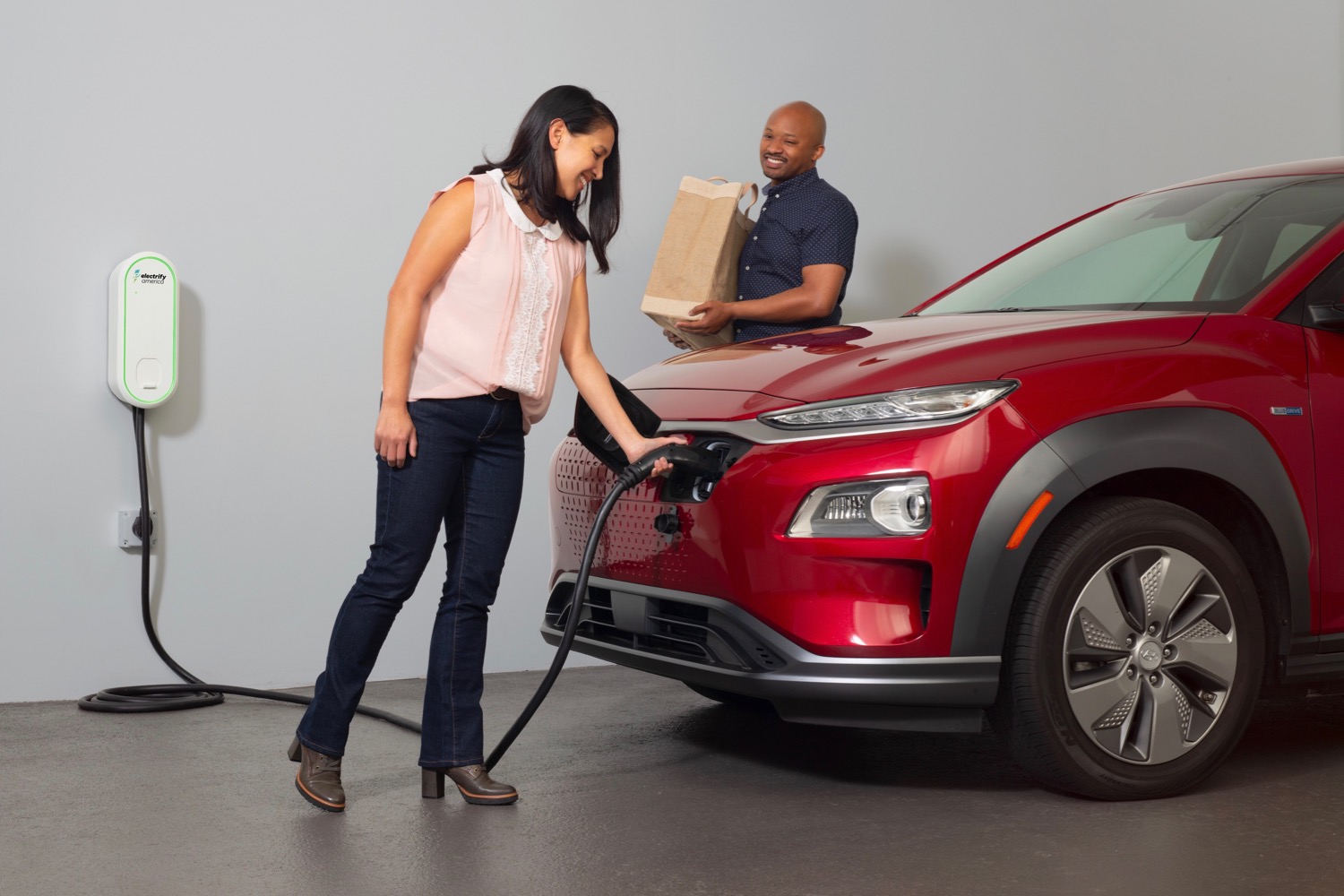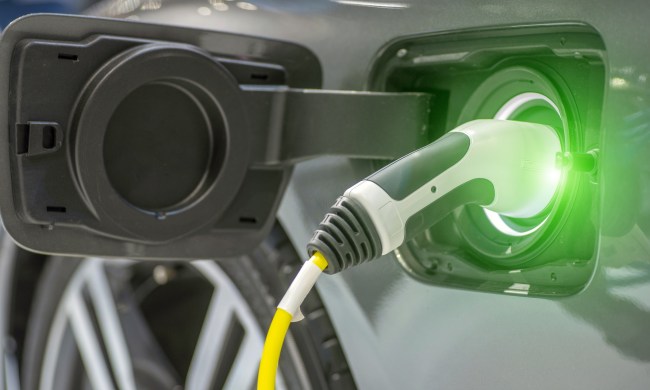
Electrify America was created to spend $2 billion of Volkswagen “Dieselgate” penalty money on zero-emission vehicle infrastructure. So far, most of the money spent has gone to public charging stations along major highways, and in high-traffic urban areas. Now Electrify America also has something for drivers who like to charge their electric cars at home — its first home charging station.
The charging station is a 240-volt Level 2 unit that can charge at up to 7.6 kilowatts. That allows for a charge up to six times faster than a standard 120-volt household outlet (also known as Level 1), according to Electrify America. Many drivers do more than 80% of their charging at home, Nina Huesgen, senior manager of Level 2 operations and program management at Electrify America, said in a statement. But the battery packs in many electric cars have gotten so big that charging from a household outlet isn’t a practical option anymore — hence the need for upgraded home charging equipment.
The home charging station connects to a NEMA 14-50 outlet — the same kind used by large appliances. It can be installed inside or outside and comes with a 24-foot cable to plug into a car. As with any home charging station installation, customers will need to ensure their homes’ wiring is in good enough condition to handle the added voltage. Customers can take an online survey to determine installation needs, and Qmerit, the company overseeing installations, will provide up to three pricing quotes from local electricians.
Other companies offer home charging station, but Electrify America claims to bring the advantage of greater connectivity. The station links with the Electrify America app, allowing drivers to view their complete charging history — including public and at-home charging — in one place. A built-in Wi-Fi connection can also provide data on home charging sessions separately, according to Electrify America. This could also enable “demand response” programs, allowing owners to take advantage of lower electricity rates during off-peak times, Electrify America noted.
The Electrify America home charging station is available on Amazon for $499, as well as through Electrify America’s own website.
Home charging is an important response to customer needs, but a robust network of public charging stations is still needed. Drivers who don’t own homes must often rely on the public charging network, and public stations ensure drivers can take long trips. Electrify America hopes to have 800 charging sites, with about 3,500 individual plugs, in operation by December 2021. That includes more powerful DC fast-charging stations to keep pace with new electric cars like the Porsche Taycan. Electrify America is also experimenting with automated charging for potential future self-driving cars.


